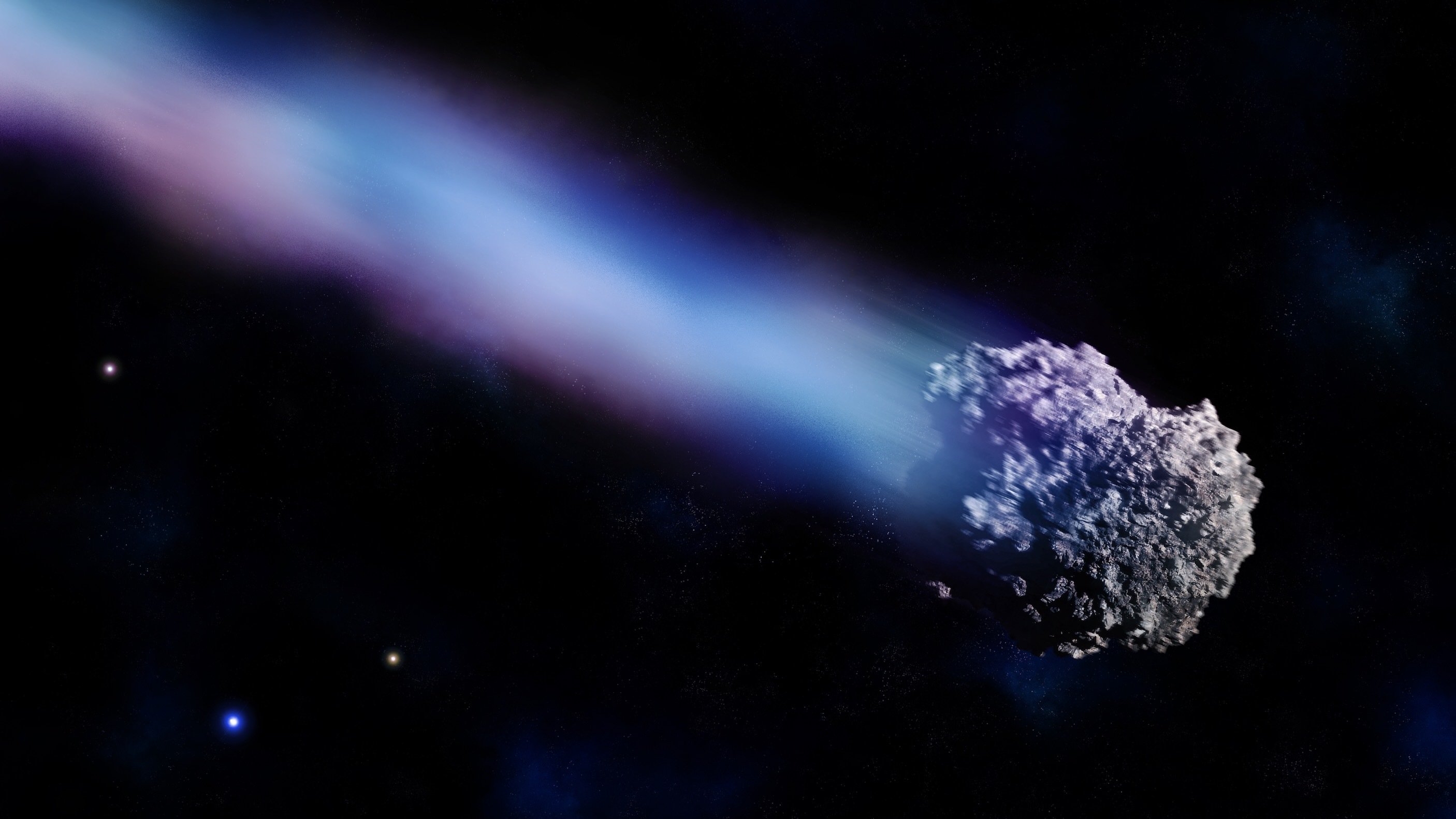
Meteoroids, those intriguing celestial objects that capture the imagination of both young and old, hold numerous surprises within their rocky cores. These small pieces of debris, originating from comets or asteroids, traverse the vast expanse of space before entering Earth’s atmosphere.
In this article, we will delve into the fascinating world of meteoroids and uncover 14 surprising facts about them. From their origins to their impact on our planet, these extraterrestrial visitors have a lot more to offer than meets the eye. So, buckle up and get ready to embark on a cosmic journey as we explore the captivating realm of meteoroids!
Key Takeaways:
- Meteoroids, like shooting stars, light up the night sky as they burn up in Earth’s atmosphere, creating spectacular meteor showers and delivering clues about the early solar system.
- These cosmic wanderers, from tiny specks to massive rocks, hold the secrets of the universe and play a role in shaping our planet, delivering water and organic compounds essential for life.
Meteoroids, Meteors, and Meteorites – What’s the Difference?
Before we delve into the intriguing world of meteoroids, let’s clarify some terminology. A meteoroid refers to a small object floating in space, typically made up of rocks, minerals, and even metals. When a meteoroid enters the Earth’s atmosphere and starts to burn up due to friction, it is called a meteor. If, against all odds, it survives its fiery descent and lands on Earth’s surface, it becomes a meteorite. These three stages play a crucial role in the life cycle of these cosmic wanderers.
They Can Originate from Different Sources
Meteoroids come from various sources in our solar system. Some originate from asteroids, which are rocky objects orbiting the Sun, while others are fragments ejected from comets as they approach the scorching heat of the Sun. These objects journey through space until they cross paths with our planet.
Sizes Vary Greatly
Meteoroids come in a wide range of sizes, from tiny specks of dust to massive rocks several meters in diameter. While most are relatively small, it’s the larger ones that capture our attention when they create meteor showers or even cause significant impact events.
They Light Up the Night Sky
When a meteoroid enters Earth’s atmosphere, it begins to burn up due to the extreme heat generated by the friction with air molecules. This blazing cosmic visitor produces a bright streak across the sky known as a meteor, commonly referred to as a shooting star.
Meteor Showers Are Spectacular Displays
Periodically, Earth passes through debris trails left behind by comets as they orbit the Sun. When these tiny specks of cosmic dust, known as meteoroids, enter our atmosphere simultaneously, they create magnificent meteor showers. These events provide a breathtaking celestial spectacle for stargazers around the world.
Meteoroids Can Cause Catastrophic Impact Events
While most meteoroids disintegrate harmlessly in our atmosphere, some larger ones can survive the descent and make it to the Earth’s surface. These impact events can have significant consequences, shaping the geology of our planet and even triggering mass extinctions.
They Have Different Compositions
Meteoroids exhibit a range of compositions depending on their source. Some are made up of stony materials, while others contain a mix of metals like iron and nickel. This diversity of compositions provides valuable insights into the origin and evolution of our solar system.
Meteoroids Can Travel at Mind-Boggling Speeds
As meteoroids enter the Earth’s atmosphere, they can travel at incredible speeds, reaching tens of kilometers per second. The friction generated during their atmospheric entry causes them to heat up and create the spectacular light show we observe from the surface.
Most Meteoroids Disintegrate Before Reaching the Ground
Due to the intense heat and pressure experienced during atmospheric entry, the majority of meteoroids break apart and vaporize before reaching the Earth’s surface. This disintegration is responsible for the stunning display of meteors streaking across the night sky.
Meteoroids Hold Clues about the Early Solar System
By studying meteoroids, scientists gain valuable insights into the formation and evolution of our solar system. These ancient celestial remnants preserve records of the early solar system’s chemistry, allowing us to unravel the mysteries of our cosmic origins.
Meteoroids Can Bring Extraterrestrial Organic Compounds
Meteoroids often contain organic compounds, which are molecules essential for life as we know it. When they survive the fiery descent and land on Earth as meteorites, they can potentially deliver these extraterrestrial building blocks, providing key ingredients for the development of life on our planet.
They Played a Role in the Origin of Water on Earth
Scientists believe that meteoroids played a significant role in delivering water to our planet during its early formation. These cosmic visitors contained abundant supplies of water in the form of ice, contributing to the formation of Earth’s vast oceans.
Some Meteoroids Create Impact Craters
When meteoroids survive the journey through our atmosphere and strike the Earth’s surface, they can create impact craters. These scars on the landscape serve as powerful reminders of the tremendous forces at play in our vast cosmic neighborhood.
Meteoroids Carry the Secrets of the Universe
Every meteoroid that graces our atmosphere carries with it a piece of the universe’s vast tapestry. By studying these cosmic travelers, scientists continue to unlock profound insights into the formation of planets, the origins of life, and the mysteries of our awe-inspiring universe.
So, there you have it – 14 surprising facts about meteoroids that take us on a journey through the enthralling world beyond our planet. The study of meteoroids not only ignites our imagination but also deepens our understanding of the universe and our place within it. Let’s continue to gaze at the night sky, for it holds countless wonders yet to be discovered.
Conclusion
In conclusion, meteoroids are fascinating celestial objects that have a significant impact on our understanding of the universe. These small rocky or metallic fragments travel through space at astounding speeds, often colliding with planets or burning up in Earth’s atmosphere. The study of meteoroids provides invaluable insights into the formation and evolution of our solar system.From their origins in the asteroid belt to the mesmerizing meteor showers they create, meteoroids continue to captivate scientists and stargazers alike. Whether it’s their role in the formation of craters, their potential to carry organic compounds, or their influence on the Earth’s climate, meteoroids hold myriad secrets waiting to be discovered.As we continue to explore the mysteries of the universe, meteoroids will undoubtedly play a crucial role in expanding our knowledge and reshaping our understanding of the cosmos. Their surprising facts and enduring mysteries make them an exciting area of study for astronomers and space enthusiasts alike.
FAQs
Q: What is a meteoroid?
A: A meteoroid is a small rocky or metallic object that travels through space. It is smaller than an asteroid and larger than a molecule of dust.
Q: How big are meteoroids?
A: Meteoroids can vary in size from tiny particles to objects several meters in diameter. However, most meteoroids are smaller than a grain of sand.
Q: Where do meteoroids come from?
A: Most meteoroids originate from the asteroid belt, located between the orbits of Mars and Jupiter. Others come from comets or moons within our solar system.
Q: Do all meteoroids reach the Earth’s surface?
A: No, most meteoroids burn up in the Earth’s atmosphere before reaching the surface. The ones that do make it to the ground are called meteorites.
Q: Can meteoroids cause damage?
A: Yes, larger meteoroids that survive the journey through the atmosphere can cause damage upon impact. Famous examples include the Barringer Crater in Arizona, caused by a meteoroid impact around 50,000 years ago.
Q: What causes meteor showers?
A: Meteor showers occur when Earth passes through the debris left behind by a comet. The particles burn up in the atmosphere, creating a dazzling display of shooting stars.
Q: Can meteoroids carry life forms?
A: It is possible for meteoroids to carry organic compounds, including amino acids, which are the building blocks of life. However, the chances of intact life forms surviving the journey through space are considered very low.
Q: Are meteoroids related to meteorites?
A: Yes, meteoroids are the precursors to meteorites. Once a meteoroid survives the entry through Earth’s atmosphere and lands on the surface, it is called a meteorite.
Q: How are meteoroids studied?
A: Meteoroids are studied through various methods, including ground-based and space-based telescopes, meteorite collections, and radar systems that track their trajectories.
Q: Do meteoroids have any impact on Earth’s climate?
A: Meteoroids can have a minimal impact on Earth’s climate by injecting tiny particles into the atmosphere. However, their effect is negligible compared to other climate factors.
Meteoroids hold countless surprises, from their cosmic origins to Earthly impacts. Yet, space harbors even more wonders waiting for curious minds. Care to explore shooting stars' extraordinary facts? How about uncovering the astonishing truths behind lunar eclipses? Maybe you'd enjoy learning little-known details of our solar system's planets. Whichever path you choose, prepare for a journey filled with awe-inspiring discoveries that'll leave you marveling at the universe's magnificence.
Was this page helpful?
Our commitment to delivering trustworthy and engaging content is at the heart of what we do. Each fact on our site is contributed by real users like you, bringing a wealth of diverse insights and information. To ensure the highest standards of accuracy and reliability, our dedicated editors meticulously review each submission. This process guarantees that the facts we share are not only fascinating but also credible. Trust in our commitment to quality and authenticity as you explore and learn with us.


